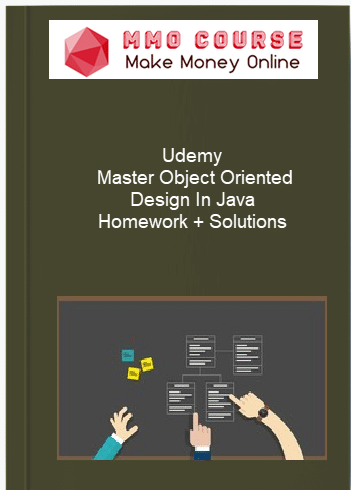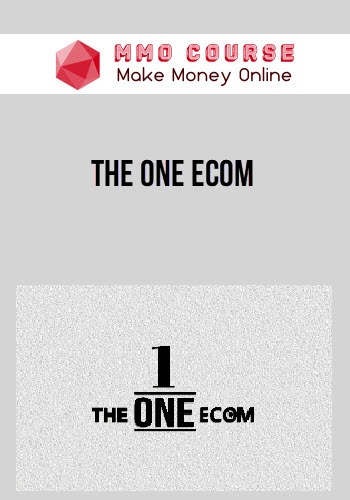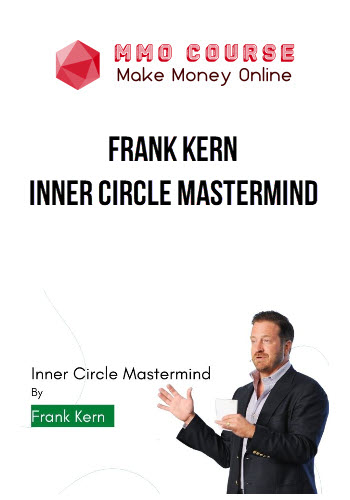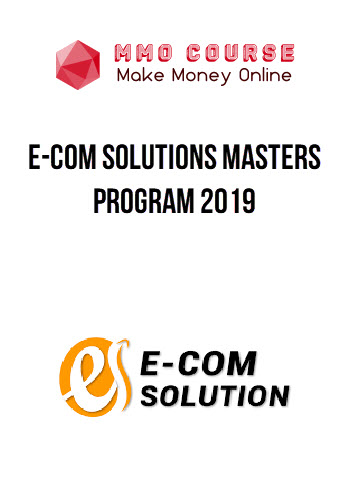Udemy – Master Object Oriented Design In Java – Homework + Solutions
$199.00 $17.00
GB Status : Instant Deliver
Sales Page: udemy
Description
Here’s What’s Included:
- Advance your programming skills from a junior level newbie to a competent intermediate level object oriented software developer
-
Design and develop software using best practices in Object oriented programming
-
Apply the 5 crucial object oriented design principles using Java
- Apply design patterns such as Strategy, Observer, Template Method, Factory, and Builder
- Make the leap into professional software craftsmanship and take your career to the next level!
Requirements
- You should have a java editor installed. We’ll be using Eclipse.
- Install Jdk from oracle website
- Understand the basics of loops and conditionals.
Description
LATEST: Course Updated Nov 2018
SUPER CHARGE OF YOUR PROGRAMMING CAREER and acquire some seriously marketable skills!
Just because you learned how to use a hammer doesn’t mean you are ready to construct a building. Similarly, It’s not enough to just understand a programming language. That’s just a tool that can be used to develop various programs. The real craftsmanship is in software DESIGN.
This course is designed to take a junior level programmer with limited knowledge about object orientation to a competent level object oriented software designer! I expect you to understand the basics of loops, methods and conditionals in Java.
You’ll be completing hands-on HOMEWORK Exercises through out the course! I have provided detailed video solutions to the exercises so that you can check your answers and get step by step instructions of how to tackle the object oriented design assignments.
You can find plenty of resources online for solving a programming puzzle or practicing algorithms. But… when it comes to object oriented design, admittedly, there is limited material out there for you to practice. So in this course, we use a LEARN-BY-DOING approach to explore a series of progressively challenging exercises to discover the 5 core object oriented design PRINCIPLES summarized by an acronym called SOLID:
(S). Single Responsibility
(O). Open/Closed
(L). Liskov Substitution
(l ). Interface Segregation
(D). Dependency Inversion
During this journey you’ll get practice applying some of the most important DESIGN PATTERNS that competent developers must have under their belt. There are so many design patterns out there, but we’ll be thoroughly covering only the most important ones. Save yourself the time from learning all the design patterns and going on a design frenzy. Focus on the 20% that covers 80% of the scenarios and add miles to your programming efficiency.
These cover 80% of patterns used out there in professional software development.
1). Strategy Pattern
2). Observer Pattern
3). Builder pattern
4). Factory method pattern
5). Template Method Pattern
6). Singleton Pattern
The topics can be applied to pretty much any object oriented language. But, we’ll be using Java, so I expect you to be familiar with the basic language constructs such as classes, methods and interfaces. But don’t worry if you don’t know about these, I’ve taken the time to create 6 comprehensive prerequisite lessons on introduction to object orientation. In these lessons, new comers can learn about the basics of object orientation such as:
1). Classes and objects
2). Inheritance and polymorphism,
3). Interfaces and abstract classes.
I’m certain that, by practicing the concepts covered, you’ll make a substantial leap forward in your programming career. I hope to see you in the coming lessons.
This course is from This site offers lectures on practical software development topics to immediately impact your programming skills. Things you can take to your interview and feel confident in your abilities!
Who this course is for:
- If you’re afraid to show your code to senior developers, you MUST take this course
- If you want to design well constructed software this course is for you
Delivery Policy
When will I receive my course?
You will receive a link to download your course immediately or within 1 to 21 days. It depends on the product you buy, so please read the short description of the product carefully before making a purchase.
How is my course delivered?
We share courses through Google Drive, so once your order is complete, you'll receive an invitation to view the course in your email.
To avoid any delay in delivery, please provide a Google mail and enter your email address correctly in the Checkout Page.
In case you submit a wrong email address, please contact us to resend the course to the correct email.
How do I check status of my order?
Please log in to MMOCourse account then go to Order Page. You will find all your orders includes number, date, status and total price.
If the status is Processing: Your course is being uploaded. Please be patient and wait for us to complete your order. If your order has multiple courses and one of them has not been updated with the download link, the status of the order is also Processing.
If the status is Completed: Your course is ready for immediate download. Click "VIEW" to view details and download the course.
Where can I find my course?
Once your order is complete, a link to download the course will automatically be sent to your email.
You can also get the download link by logging into your mmocourse.hk account then going to Downloads Page.










